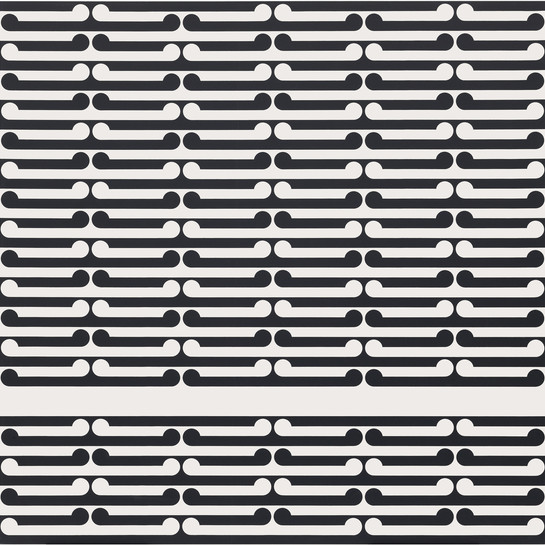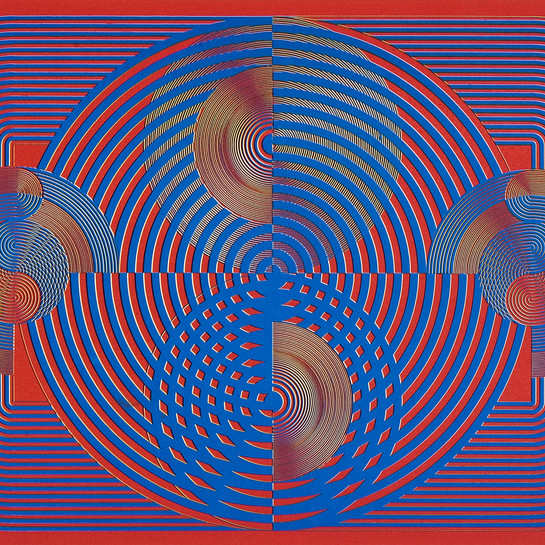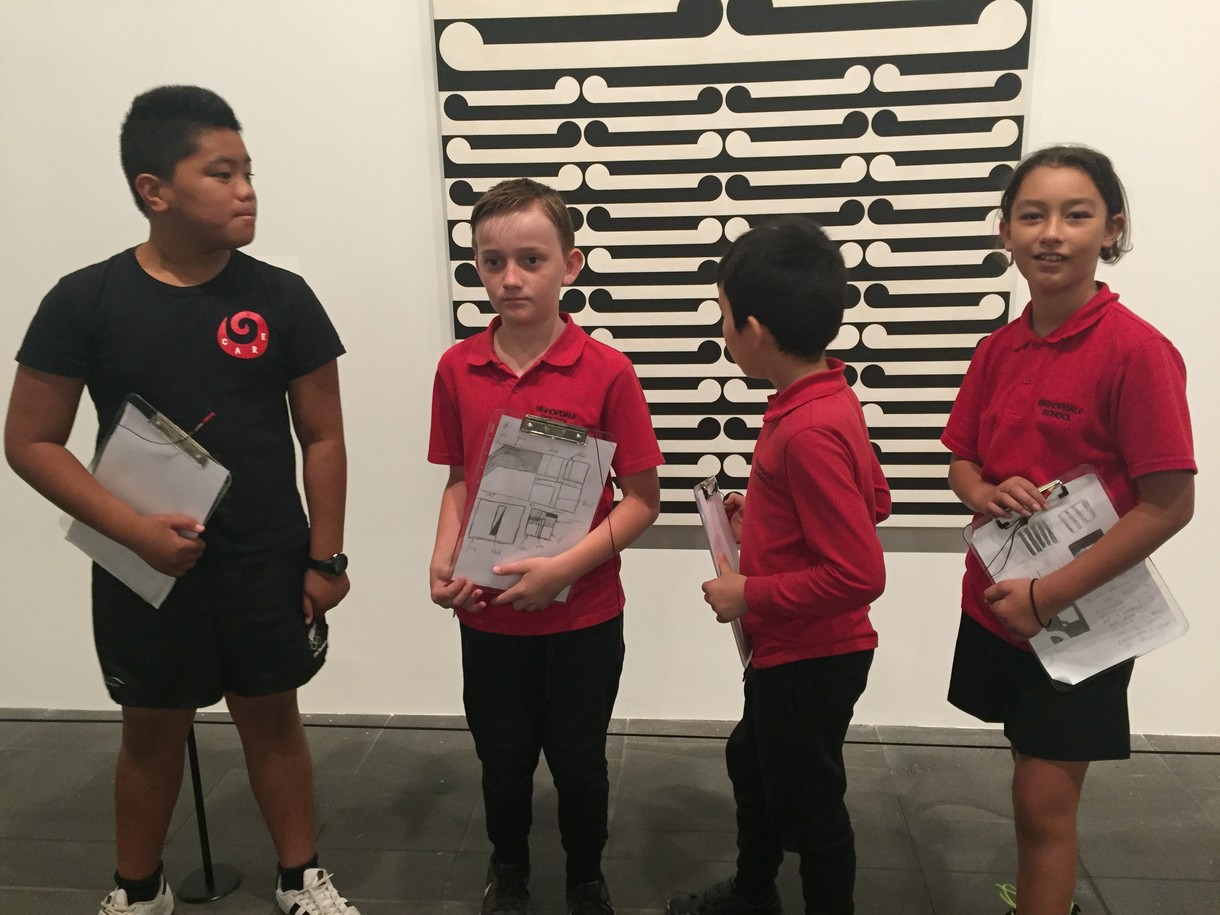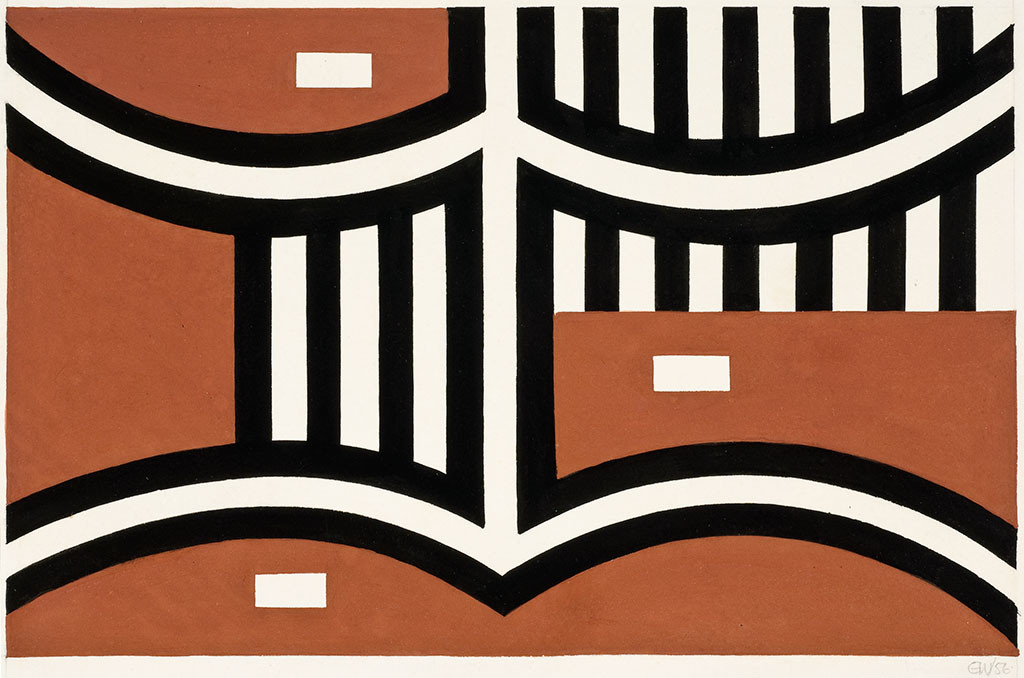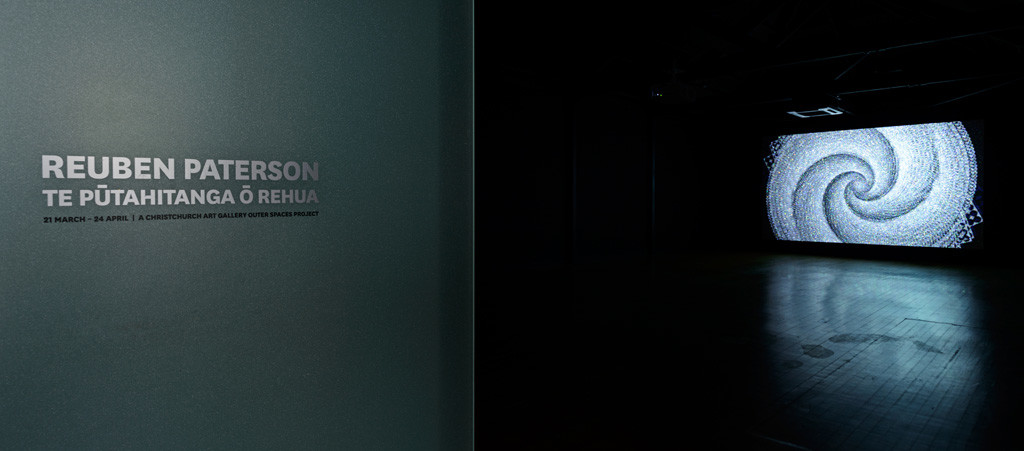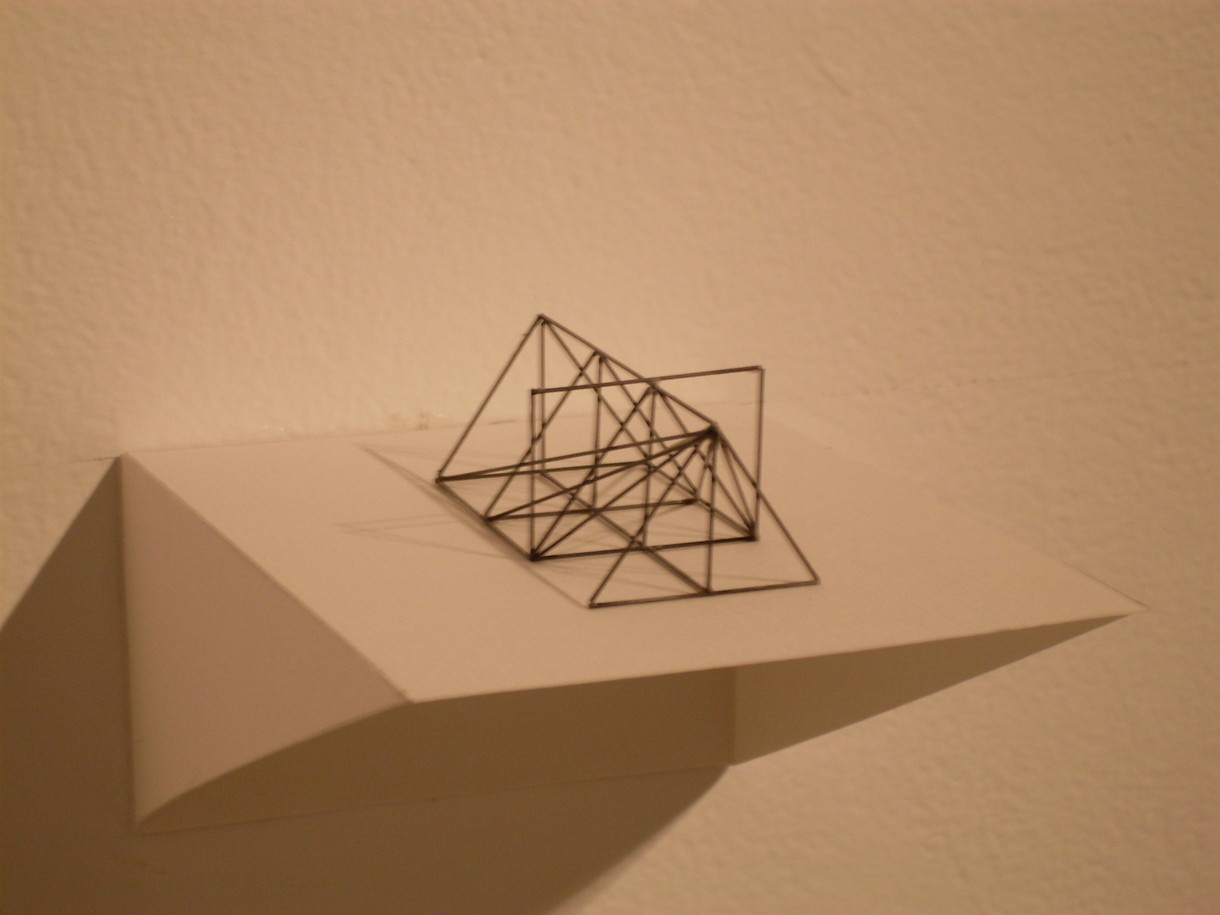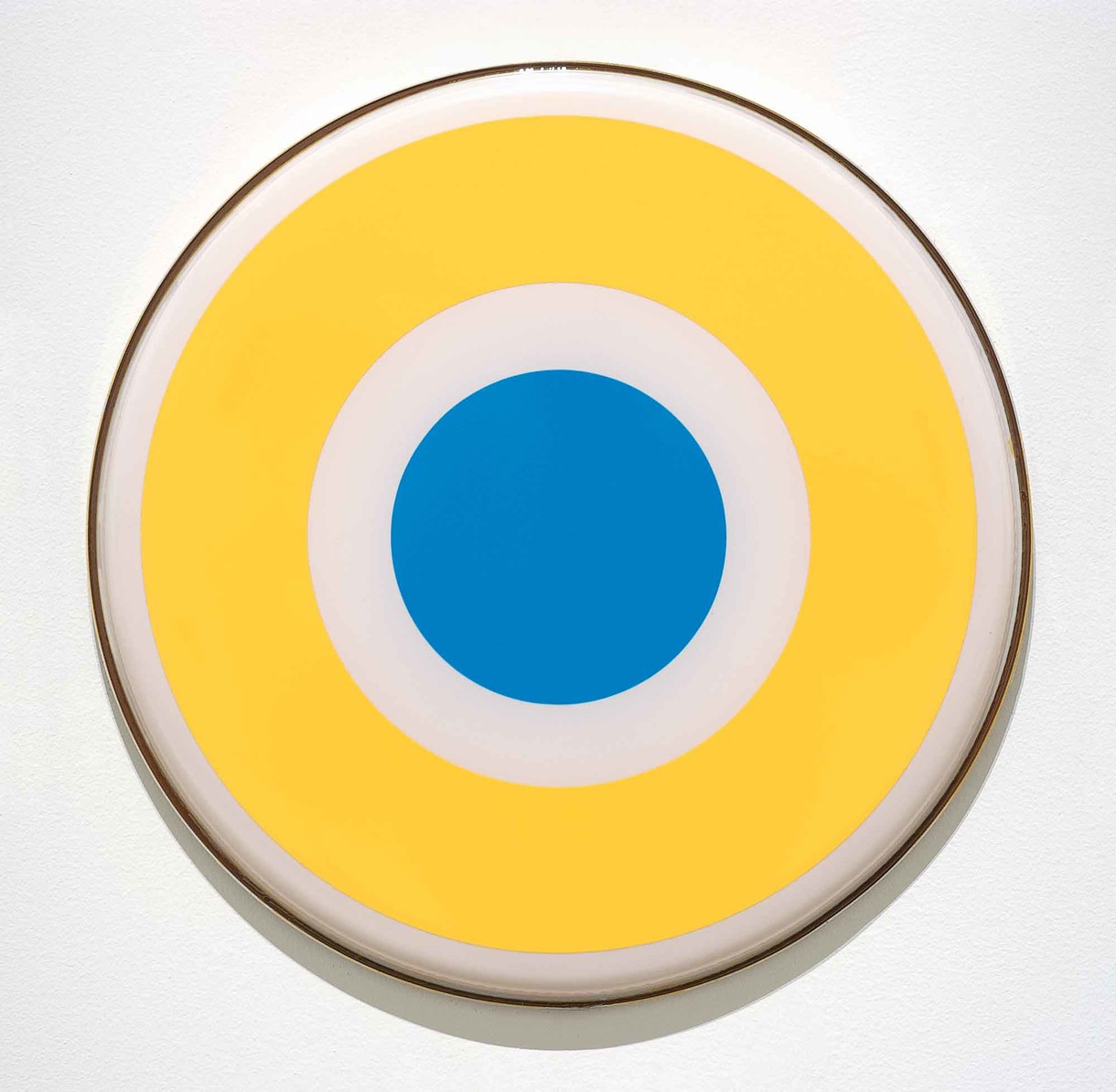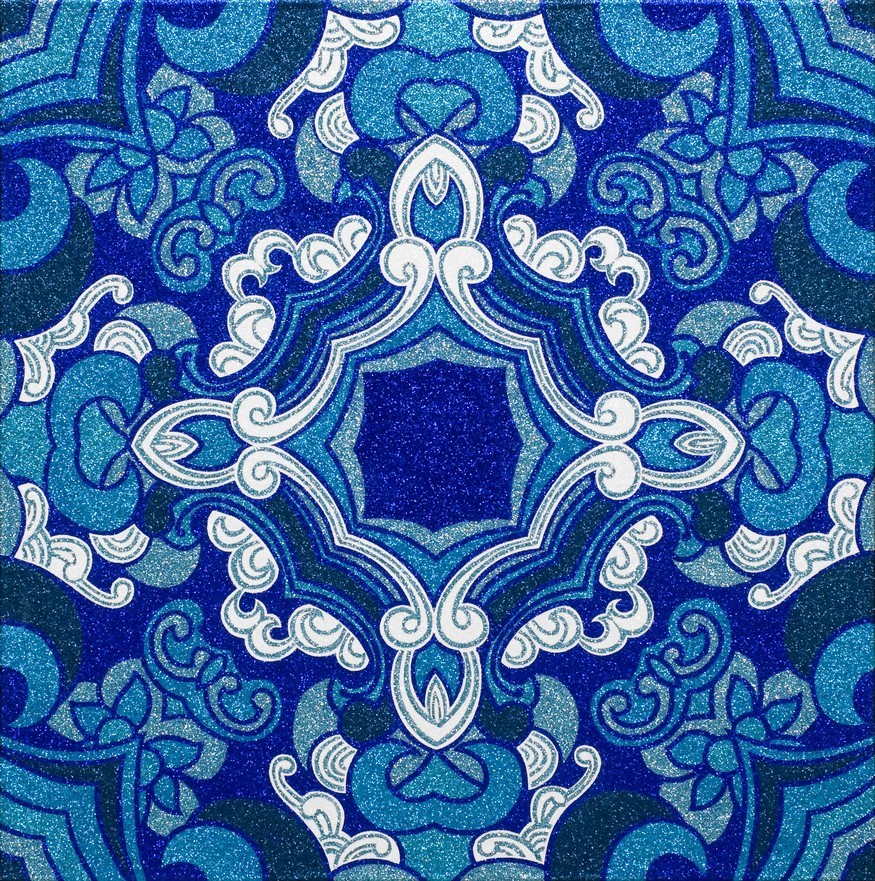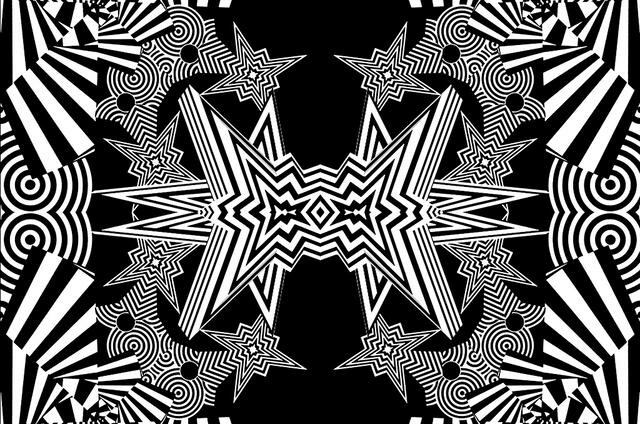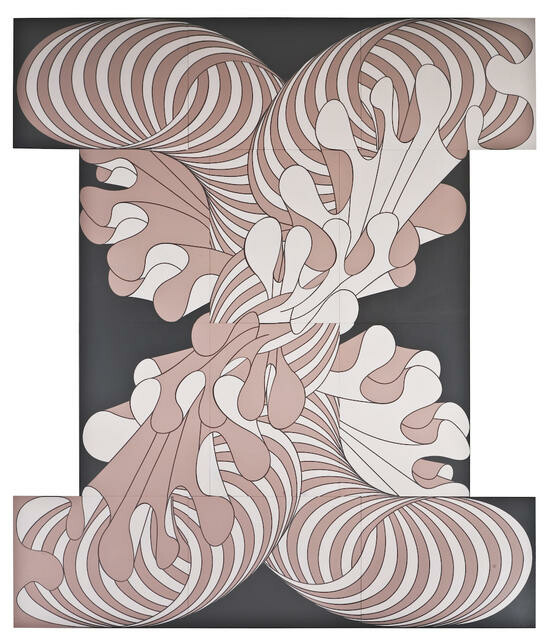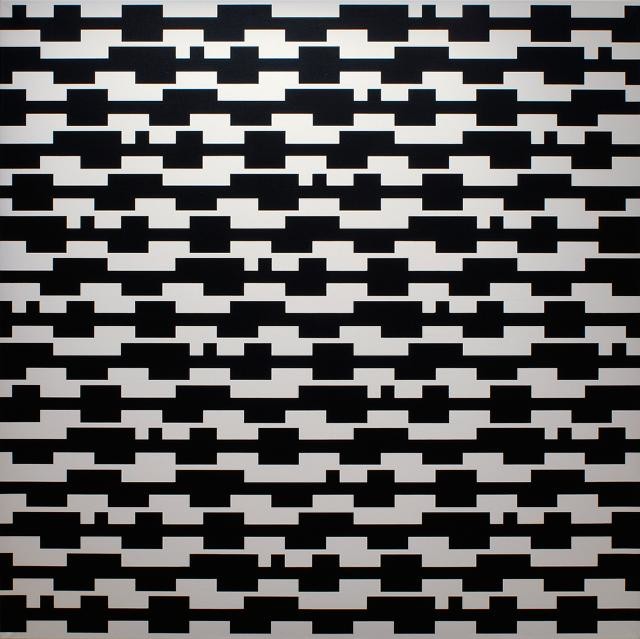Gordon Walters
Aotearoa New Zealand, b.1919, d.1995
Black on white
- 1965
- PVA on hardboard
- N. Barrett bequest collection, purchased 2014
- Reproduced courtesy of the Gordon Walters Estate
- 1216 x 915mm
- 2014/036
Tags: abstraction, koru (pattern), Māori (culture or style), monochrome, Op art, stripes
Gordon Walters is best-known for work that fused the influence of European modernist art and Māori and Pacific art forms, particularly the koru motif of painted kōwhaiwhai rafter designs. Walters’ influences from European modernism included the hard-edged geometric abstractions of Victor Vasarely and Auguste Herbin, seen while in Europe in 1950–51. Walters made his first optically charged ‘koru paintings’ in 1956, but didn’t show them until 1966 when he first exhibited this painting in Auckland.
Walters’ adaptation of the koru has been both admired and criticised by cultural commentators. Walters himself, when discussing the motif, increasingly focused on the fine mechanics of abstraction:
'What I’ve done to the form is push it more in the direction of geometry. So that I can have in my painting not only a positive/negative effect of black and white, but I can also have a working of vertical and horizontal, which is equally important.' (Op + Pop, 6 February – 19 June 2016)
